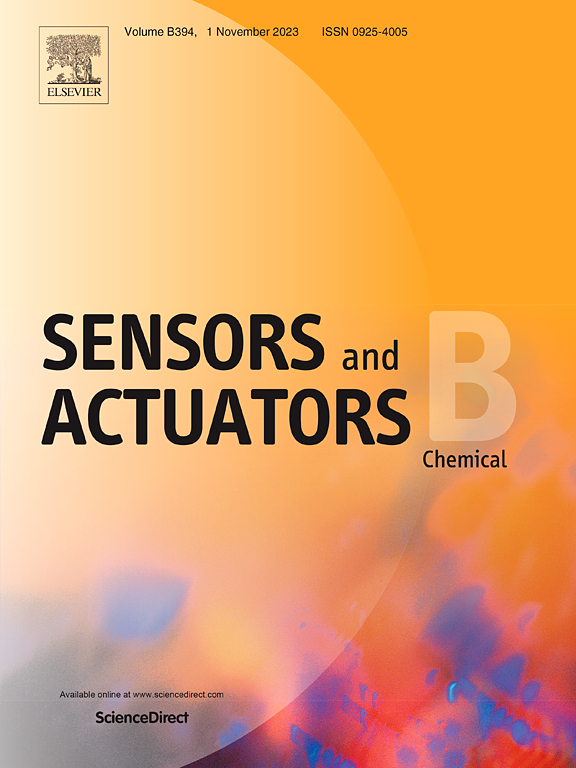基于磷钨酸电子受体修饰的CoTiO3纳米颗粒的高性能快速响应乙醇气体传感器
IF 8
1区 化学
Q1 CHEMISTRY, ANALYTICAL
引用次数: 0
摘要
本文采用水热法和煅烧法制备了CoTiO3纳米颗粒,并将磷钨酸(PW12)引入到CoTiO3纳米颗粒中。所介绍的PW12可以作为电子受体,促进电子与空穴的分离。实验结果表明,掺杂适量的PW12可以改善CoTiO3对乙醇的气敏性能。在最佳工作温度下,CoTiO3/1% pw12对100 ppm乙醇气体的响应为40.4,是纯CoTiO3的2倍,响应和恢复时间也非常快(1 s和8 s)。同时,对CoTiO3/PW12复合气敏材料的重复性和长期稳定性等传感性能进行了研究。此外,还对传感机理进行了分析和讨论。实验证明,PW12能促进电子-空穴分离,抑制电子-空穴复合,提高气体灵敏度。本工作为开发高性能CoTiO3基气体传感器提供了新的思路。本文章由计算机程序翻译,如有差异,请以英文原文为准。
A high-performance and rapid-response ethanol gas sensor based on CoTiO3 nanoparticles decorated with phosphotungstic acid electron acceptor
In this paper, CoTiO3 nanoparticles were prepared by hydrothermal and calcination method, and phosphotungstic acid (PW12) was introduced into CoTiO3 nanoparticles. The introduced PW12 can work as electron acceptor promote electrons and holes separation. The experimental results show that doping with appropriate amount of PW12 can improve the gas sensitive property to ethanol of the CoTiO3. The response of CoTiO3/1%PW12 to 100 ppm ethanol gas at the optimal operating temperature is 40.4, which is twice higher than that of pure CoTiO3, and the response and recovery time is also very rapid (1 s and 8 s). At the same time, other sensing properties such as repeatability and long term stability of the CoTiO3/PW12 composite gas sensing materials were studied. In addition, the sensing mechanism was analyzed and discussed. The experiment proves that PW12 can promote electron-hole separation and restrain their recombination improve gas sensitivity. This work provides a new idea for developing high-performance CoTiO3 based gas sensor.
求助全文
通过发布文献求助,成功后即可免费获取论文全文。
去求助
来源期刊

Sensors and Actuators B: Chemical
工程技术-电化学
CiteScore
14.60
自引率
11.90%
发文量
1776
审稿时长
3.2 months
期刊介绍:
Sensors & Actuators, B: Chemical is an international journal focused on the research and development of chemical transducers. It covers chemical sensors and biosensors, chemical actuators, and analytical microsystems. The journal is interdisciplinary, aiming to publish original works showcasing substantial advancements beyond the current state of the art in these fields, with practical applicability to solving meaningful analytical problems. Review articles are accepted by invitation from an Editor of the journal.
 求助内容:
求助内容: 应助结果提醒方式:
应助结果提醒方式:


